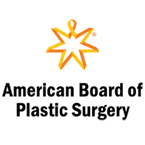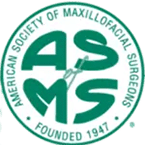Cosmetic surgery is elective and cosmetic surgery patients are usually healthy. Most procedures are performed as an outpatient. Occasionally, they will stay overnight in the hospital for the control of pain or nausea, for help in simple daily care, or for observation to prevent or treat a possible complication. Few bandages are necessary. Patients need tender loving care, some assistance with simple wound care, the application of ice or lubricating ointment to the eye, and modest help with the needs of everyday living. When possible, they can recover with help at home.
SURGERY
- Many facial procedures are performed as an outpatient and do not require staying overnight at the hospital. However, the patient may choose to remain in the hospital for convenience or, because of the length of the procedure and mild to moderate discomfort, wish to stay overnight in the hospital as a short stay. The primary post-op need is reassurance, intravenous or oral pain medication, and intravenous medication for the treatment of nausea.
- Drains may be placed to minimize swelling and facilitate a more rapid recovery.
- When lower lid surgery is performed, a single suture may be placed in the lateral corner of each eye to minimize eyelid irritation and help maintain the correct position of the lower lid during healing. These sutures prevent the eye from opening completely but do not occlude vision completely- the patient can see, although the eyelid slit appears temporarily smaller. The sutures are removed within 2 to 3 days after surgery by the doctor. Because many patients tend to sleep with their eyes open after surgery, a bland eye ointment is applied to the white of the eye, especially at night while sleeping and in the daytime, as necessary, to prevent irritation. Ice compresses are applied to decrease swelling and increase comfort. Ice and tap water can be placed in a bowl with a washcloth or 4 x 4′s wet with cold water, rung out, and laid across the eyes, replacing them as necessary.
- Complications are rare, but can occur. A post-operative hematoma — usually appearing as a significant lateral facial and neck swelling, often one-sided and sometimes associated with increasing discomfort — can occur. A hematoma of the eyelid can, on very rare occasions, lead to blindness after lower lid blepharoplasty.
AFTER SURGERY
- Sleep with your head up to decrease swelling
- Shower and shampoo on the day after surgery. If the drain is still in place, do not shampoo until it is removed.
- Apply a cold wet washcloth across the eyes to soothe the area, decrease swelling and cleanse any stitches or crusts.
- Wash the incisions with soap and water each day. Ointments such as Vaseline, Aquaphor, or bacitracin can be applied, if desired. They are not normally applied within or near the hair to avoid messiness.
- If a facelift is performed, use a small pillow or folded towel behind the neck when in bed or sleeping, rather than a large pillow. It is important to keep the chin up and the neck extended to prevent folding of neck skin onto itself, after a facelift. Avoid flexing the neck onto the chest. When watching TV or reading, keep the chin up, not down. Do not watch television or read in bed with the chin on the chest. Read a book elevated on a bookstand or with your elbows on your knees so that your chin remains extended.
- Expect facial swelling to increase for 48-72 hours. It will then gradually decrease over a few days to 10 days.
- Apply a bland lubricating eye ointment at night and bland saline eye drops during the day, if needed, to lessen eye irritation. These are available without prescription from any drugstore. Applying ointment to the whites of your eyes each night and when sleeping prevents irritation. A temporary stitch is often placed to partially close the eyes so they do not open fully for a few days. It is removed one to two days after surgery. Blurry vision is common after eyelid surgery for a few days.
- Use water and very diluted Johnson’s “no tears baby shampoo” as a soap to clean your eyelashes and around the eyes.
- If a lower lid blepharoplasty is performed, massage the lower lid 5 times a day by placing the index finger on the skin of the lower lid just above the cheekbone and under the eyelashes. Push in and up to stretch the lower lid skin to cover the pupil. Then release the pressure and let eyelid fall back. Lift and apply pressure 5 times a day. This massage is started two days after lower lid surgery and is continued for 4 weeks or longer. This massage helps decrease postoperative swelling and improves healing and eyelid position. Do not pull the eyelid down- only up.
- You can apply makeup to normal skin to cover bruising whenever you wish but do not apply makeup on incisions until they are completely healed. Use makeup that is easy to remove without excessive rubbing.
- Expect numbness of the facial skin and any area of facial surgery for months after surgery. You will notice mild tenderness and firmness in the area of surgery for months.













